#ArchaeologicalSite
Explore tagged Tumblr posts
Text



Sean bienvenidos japonistasarqueologicos a una nueva entrega arqueológica recién salida del horno, se ha descubierto en la prefectura de Nara espejo de bronce en forma de escudo hallado en el túmulo funerario de Tomio Maruyama, dicho esto pónganse cómodos desde que comenzamos. - Características : Mide 64 cm de largo y 31 cm de ancho. Data de finales del siglo IV y tiene 109 m de diámetro. En un examen que se realizó mediante rayos X fluorescentes al espejo con forma de escudo y estaba compuesto de cobre detectó la presencia de estaño, cobre y plomo. La superficie del espejo tenía rastros de que había sido pulido de forma suave. Los patrones geométricos, como es el patrón 'dragón', es una representación simplificada de una bestia divina china posiblemente tuvieran influencia china y los patrones de, los dientes de sierra, que se asemejan a hojas de sierra, se le aplican en la parte posterior. - En el mismo yacimiento se han encontrado: -85 espadas serpentinas en Japón y 4 en Corea del Sur. -La espada serpentina tiene una longitud total de 237, es tres veces más grande que el túmulo funerario de Uda Kitahara que es de 84,6 centímetros localizados en la ciudad de Uda, prefectura de Nara.
Kosaku Okabayashi, subdirector del Instituto Arqueológico de Kashihara, dijo en una conferencia de prensa: "El espejo de cobre en forma de escudo muestra el pensamiento flexible y la creatividad de la gente de la época, así como el alto poder de diseño. Prueba que el nivel técnico de producción fue más alto de lo que había imaginado". - El Túmulo funerario de Tomio Maruyama fue construido en la segunda mitad del siglo IV, dicho túmulo funerario tiene forma circular y es el más grande de Japón. La medición tridimensional con un láser reveló una estructura de tres etapas con un diámetro de 109 metros. La parte principal de la parte superior del montículo fue robada durante el período Meiji, y la piedra kuwagata, que se cree que fue desenterrada en ese momento, ha sido designada como una importante propiedad cultural nacional. - Espero que os guste y pasen una buena semana y nos vemos en próximas publicaciones de Japón.
-
日本の考古学者の皆さん、焼きたての新しい考古学的情報へようこそ。丸山富雄の古墳で見つかった盾の形をした青銅鏡が奈良県で発見されました。 - 特徴: サイズは長さ64cm、幅31cmです。 4 世紀末に造られた直径 109 m です。 銅製の盾型ミラーを蛍光X線で検査したところ、錫、銅、鉛の存在が検出されました。 鏡の表面には軽く磨いた跡があった。 「龍」文様などの幾何学模様は中国の影響を受けたと思われる中国の神獣を簡略化して表現したもので、背中にはノコギリの刃のような鋸歯文様が施されています。 - 同じサイトで次のものが見つかりました。 -蛇紋刀は日本に85本、韓国に4本。 蛇剣の全長は237で、奈良県宇陀市にある宇陀北原古墳の84.6センチメートルの3倍以上の大きさです。 橿原考古学研究所の岡林耕作副所長は記者会見で「盾形の銅鏡は、当時の人々の柔軟な思考と創造性、高いデザイン力を示している」と述べた。制作の技術レベルは想像以上でした。」 - 富雄丸山古墳は4世紀後半に築造された日本最大の円墳です。レーザーによる三次元計測により、直径109メートルの3段構造が判明した。明治時代に墳丘上部の主要部が盗まれ、その際に出土したとされる鍬形石は国の重要文化財に指定されている。 - 気に入っていただけて、良い一週間をお過ごしいただければ幸いです。今後の日本からの投稿でお会いしましょう。
-
Welcome, japanesearchaeologists, to a new archaeological delivery fresh from the oven, a bronze mirror in the shape of a shield found in the burial mound of Tomio Maruyama has been discovered in the Nara prefecture. That said, make yourself comfortable as we begin.
-
Characteristics : It measures 64 cm long and 31 cm wide. It dates from the end of the 4th century and is 109 m in diameter. In an examination that was carried out using fluorescent X-rays on the shield-shaped mirror and was composed of copper, the presence of tin, copper and lead was detected. The surface of the mirror had traces of being lightly polished. The geometric patterns, such as the 'dragon' pattern, is a simplified representation of a Chinese divine beast possibly having Chinese influence and the sawtooth patterns, which resemble saw blades, are applied to the back. . - In the same site they have been found:
-
85 serpentine swords in Japan and 4 in South Korea. -The serpentine sword has a total length of 237, it is three times larger than the burial mound of Uda Kitahara which is 84.6 centimeters located in the city of Uda, Nara prefecture. Kosaku Okabayashi, deputy director of the Kashihara Archaeological Institute, said at a press conference: "The shield-shaped copper mirror shows the flexible thinking and creativity of the people of the time, as well as the high design power. It proves that "The technical level of production was higher than I had imagined."
-
The Tomio Maruyama Burial Mound was built in the second half of the 4th century. This burial mound is circular in shape and is the largest in Japan. Three-dimensional measurement with a laser revealed a three-stage structure with a diameter of 109 meters. The main part of the upper part of the mound was stolen during the Meiji period, and the kuwagata stone, believed to have been unearthed at that time, has been designated as an important national cultural property.
-
I hope you like it and have a good week and see you in future posts from Japan.
#日本#歴史#古墳#考古学#日本研究考古学#考古学的発掘#遺跡#奈良#奈良県#日本地理#ユネスコ#丸山古墳#古墳時#japan#history#kofun#archaeology#japanesearchaeology#archaeologicalexcavation#archaeologicalsite#Nara#naraprefecture#Japanesegeography#unesco#Maruyamaburialmound#Kofunperiod#Japaneseprehistory#tsukuridashi#Kashihara
49 notes
·
View notes
Photo
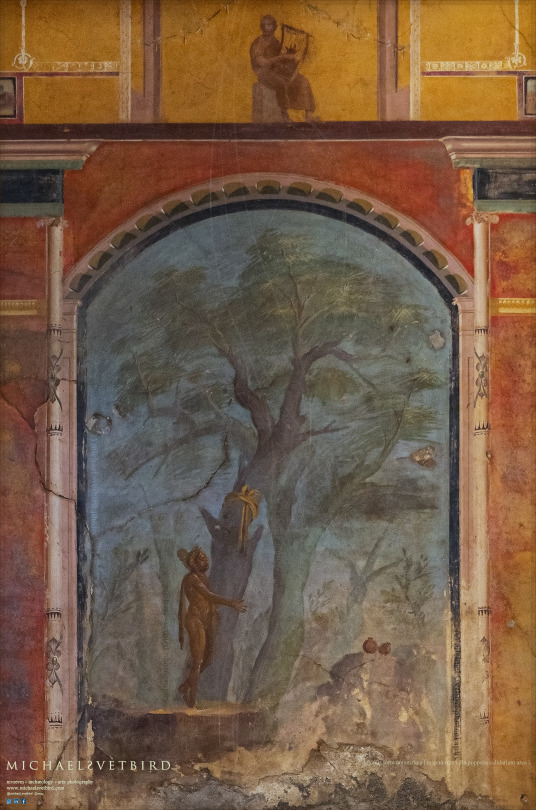
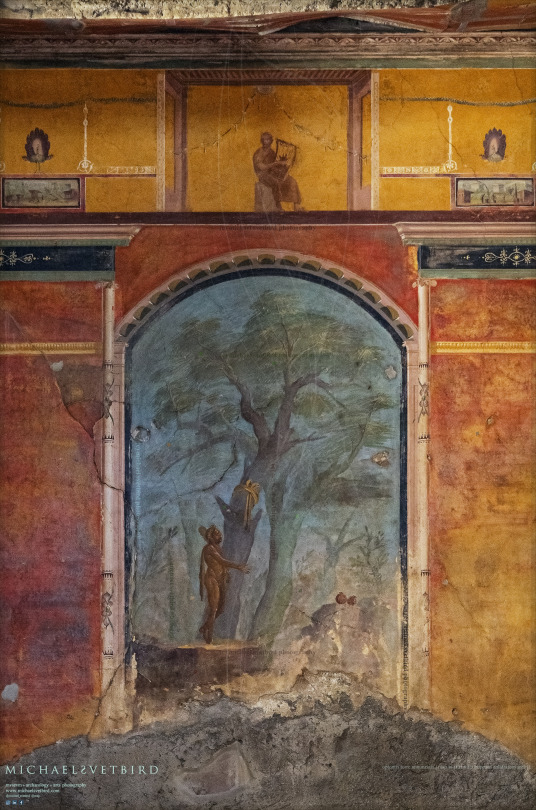
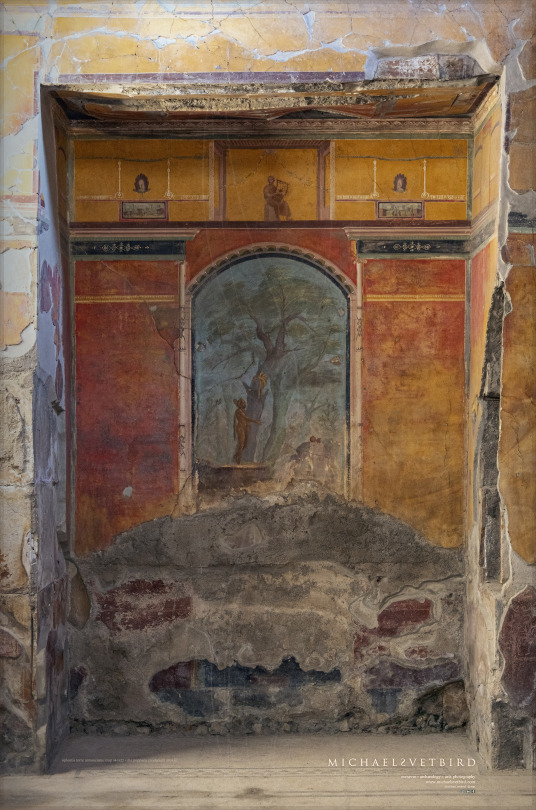
• VILLA POPPÆA | Villa A, Oplontis [Torre Annunziata] Calidarium [3], a bath room, recess: Wall painting [depicting Heracles-?]
http://pompeiisites.org/en/oplontis-en-2/villa-poppaea FB : https://www.facebook.com/pompeiiparcoarcheologico IG : @pompeii_parco_archeologico TW : @pompeii_sites
PAP VP | Michael Svetbird phs©msp | 10-11|22 6200X4100 600 [III.] [non commercial use | sorry for the watermarks]
https://www.michaelsvetbird.com
#oplontis#oplontisscavi#villapoppaea#poppea#villadipoppea#torreannunziata#villa#pompeii#pompei#excavations#archaeologicalpark#parcoarcheologico#archaeologicalsite#romanart#archaeologicalmuseum#museology#ancient#calidarium#caldarium#antiquity#ancientart#fresco#frescoes#wallpainting#mural#archaeology#ancientculture#museumphotography#archaeologyphotography#michaelsvetbird
57 notes
·
View notes
Photo
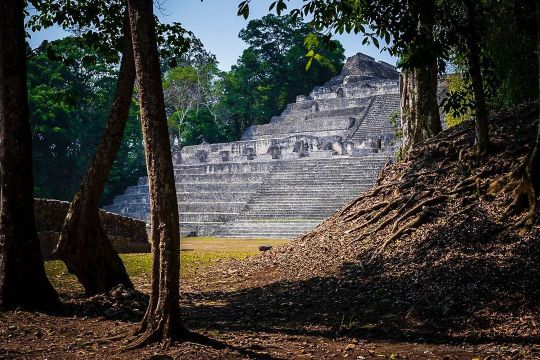
For Earth Day this year, we embarked on an exciting adventure to explore the ancient Mayan ruins of Caracol. It's been quite a journey getting here, both literally and figuratively. Our first attempt in 2018 was foiled by a sudden rainstorm that washed out the roads right before our eyes. But this year, luck was on our side as the weather cooperated and we braved the 25+ mile rocky, winding road south from the town of Santa Elena. Located within the Cayo District of Belize, Caracol is an awe-inspiring testament to the rich history and advanced civilization of the Maya people. Covering a massive area of approximately 200 square kilometers, it's even larger than present-day Belize City. The name Caracol comes from the Spanish word for snail or shell, possibly inspired by the winding access road that leads to this remarkable site. One of the highlights of Caracol is the majestic Caana, which means Sky Palace in Maya. This towering pyramid rises over 140 feet (43 meters) above the surrounding jungle canopy, making it one of the tallest man-made structures in Belize. Climbing Caana offers breathtaking panoramic views of the surrounding landscape, including the nearby Maya Mountains and the distant peaks of Guatemala. Happy Belated Earth Day! #Caracol #Caana #MayaCivilization #AncientWonders #EarthDay #BelizeAdventures #Sky #Green #Staircase #Stairs #Tranquility #Growth #ArchaeologicalSite (at Caracol Archaeological Reserve, Belize) https://www.instagram.com/p/Crce4JcqaEN/?igshid=NGJjMDIxMWI=
#caracol#caana#mayacivilization#ancientwonders#earthday#belizeadventures#sky#green#staircase#stairs#tranquility#growth#archaeologicalsite
2 notes
·
View notes
Text

Ded
Morocco
Meknes
Volubilis
Amazigh
Berber
Roman
ArchaeologicalSite
BriceDailyPhoto
1 note
·
View note
Text
A Brief History of Petra, Jordan

Explore the captivating history of Petra, Jordan, a UNESCO World Heritage Site that leaves visitors in awe with its ancient beauty and rich cultural significance.
0 notes
Photo

Butler Wash Anasazi ruins - Cedar Mesa, Utah Discover the ancient Butler Wash Anasazi ruins in picturesque Cedar Mesa, Utah - a testament to the rich history of this remarkable region.
0 notes
Photo
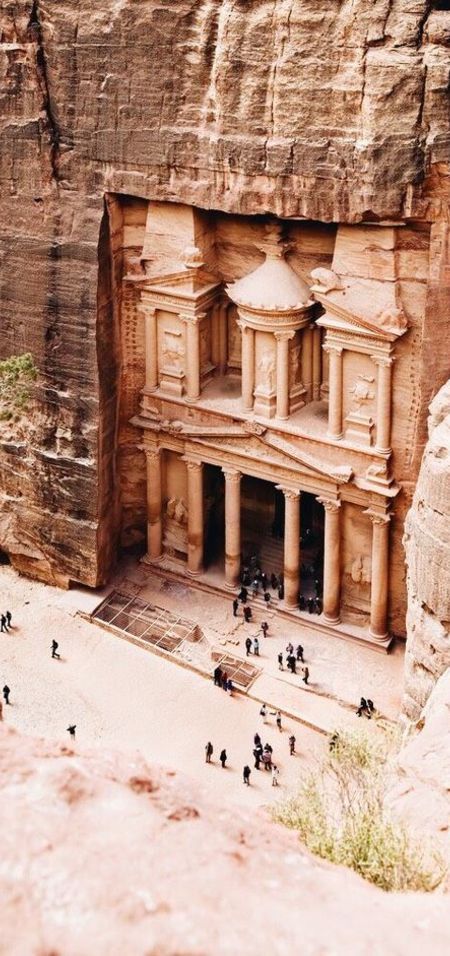
A Brief History of Petra, Jordan Explore the captivating history of Petra, Jordan, a UNESCO World Heritage Site that leaves visitors in awe with its ancient beauty and rich cultural significance.
0 notes
Photo
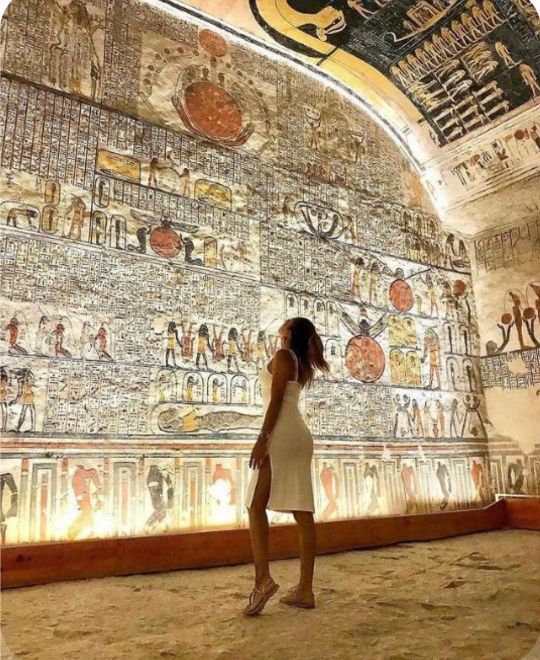
From the most preserved tomb in Egypt: tomb of Ramsses V , Ramsses VI #TombOfRamesses #RamessesVandVI #ValleyOfTheKings #AncientEgyptian #PharaohDynasty #ArchaeologicalSite #EgyptianHeritage #HistoricTomb #MortuaryTemple #Necropolis #Tutankhamun #LuxorTemple #DeirElMedina #Hieroglyphics #Sarcophagus #EgyptianArt #Thebes #MemphisEgypt #ValleyOfTheQueens #GreatHypostyleHall #FuneraryRites #AncientCivilization #RoyalTombs #PyramidsOfGiza #KarnakTemple #LuxorMuseum #OsirianStatues #KingTut #Nefertari https://www.instagram.com/p/CqPhJTtqzaY/?igshid=NGJjMDIxMWI=
#tomboframesses#ramessesvandvi#valleyofthekings#ancientegyptian#pharaohdynasty#archaeologicalsite#egyptianheritage#historictomb#mortuarytemple#necropolis#tutankhamun#luxortemple#deirelmedina#hieroglyphics#sarcophagus#egyptianart#thebes#memphisegypt#valleyofthequeens#greathypostylehall#funeraryrites#ancientcivilization#royaltombs#pyramidsofgiza#karnaktemple#luxormuseum#osirianstatues#kingtut#nefertari
0 notes
Link
#Archaeologicalsites#Bucketlistdestinations#Culturaltravelexperiences#Egypttraveltips#Exploringancientwonders#Gizaplateauadventures#Historicallandmarks#PyramidsofGiza#VisitingCairo
0 notes
Text
Prehistory

Introduction: Prehistory is a period that spans the long timeframe from the appearance of humans on Earth, approximately 4.5 million years ago, to the revolutionary invention of writing around 5000 years ago. This moment marks the transition from prehistory to documented history.
Content: The first artifacts created by humanity date back to just under 2 million years ago, marking the beginning of the Stone Age, one of the main phases of Prehistory. This extended era can be divided into several distinct phases:
Paleolithic (1,800,000 – 10,000 B.C.): During this period, our hunter-gatherer ancestors developed essential survival skills, such as crafting tools from stone, wood, and bone. Their rock art and nomadic lifestyle characterize this phase.
Mesolithic (8,000 – 6,000 B.C.): This phase marked a step towards sedentism and the transition to more advanced agricultural and harvesting societies. Humans began refining their skills in stone processing and hunting, while fishing became an important food source.
Neolithic (6,000 – 4,000 B.C.): During this phase, agriculture and animal domestication became fundamental practices, leading to stable communities and settlement in villages. The production of pottery and the use of metal tools began to emerge, contributing to increasing social complexity.
Metal Ages (4,000 – 500 B.C.): This phase marks the transition from prehistory to recorded history, as human communities began using metals such as copper, bronze, and finally iron for the manufacturing of weapons, tools, and ornaments. This period is characterized by significant technological developments and the growth of early civilizations.
Conclusion: Prehistory is a fascinating chapter in human history, where the evolution of human skills, adaptation to the environment, and the formation of early cultures offer us a window into our ancient past before the era of writing.
#Prehistory#AncientHistory#StoneAge#HumanEvolution#Archaeology#PaleolithicEra#MesolithicAge#NeolithicCulture#MetalAges#HistoricalDiscovery#CulturalHeritage#AncientCivilizations#HistoryEnthusiast#ArtifactDiscovery#ArchaeologicalSites#PastExploration#HistoricalJourney#PrehistoricArt#CaveArt#LostCivilizations
1 note
·
View note
Link
Unveiling the Enigmatic Allure of Uncommon
#globaltourism#immersivetravel#localcuisine#culinaryexploration#localtraditions#archaeologicalsites#ethicaltravel#historicalsites#localimmersion#culturalfestivals#ecotourism
0 notes
Text

Sean bienvenidos, fanáticosarqueológicos a una nueva entrega, en esta ocasión os voy a dar unos consejos básicos del periodo kofun para ir calentando motores, dicho esto pónganse cómodos que comenzamos. - Conceptos básicos periodo kofun:
-Kofun (こふん) significa: Túmulo funerario .
- Periodo que carece de escritura. - División social más compleja(jefes tribales).
-Llegada del Budismo.
-Los ritos funerarios se hacen más complejos.
-Haniwa.
-Comercio más desarrollado con China y Corea.
-Uso del hierro.
-Cerámica más compleja.
Espero que os haya gustado y nos vemos en próximas publicaciones de japón de historia, arqueología, entre otros temas, que pasen una buena semana.
-
Welcome, archaeological fans to a new installment, on this occasion I am going to give you some basic advice from the kofun period to warm up your engines, with that being said, make yourself comfortable and we will begin. - Kofun period basics:
-Kofun (こふん) means: Burial mound.
- Period that lacks writing.
- More complex social division (tribal chiefs).
-Arrival of Buddhism.
-Funeral rites become more complex.
-Haniwa.
-More developed trade with China and Korea.
-Use of iron.
-More complex ceramics.
I hope you liked it and see you in future publications on Japan about history, archeology, among other topics, have a good week.
-
考古学マニアの皆さん、ようこそ新連載へ。今回は、古墳時代の基本的なヒントをお伝えして、皆さんのウォーミングアップに役立てようと思う。
古墳時代の基本
-古墳(こふん)とは古墳のこと。
文字のない時代。
より複雑な社会区分(部族長)。
-仏教の伝来。
-祭祀が複雑になる。
-埴輪。
-中国・朝鮮との交易が発展
-鉄の使用。
-より複雑な土器。
日本の歴史、考古学、その他のトピックについての今後の投稿でお会いしましょう
#ユネスコ#古墳#日本文化#日本#日本史#歴史#未加工#特別史跡#高松塚古墳#トラベルジャパン#日本先史時代#美術#先史時代美術#遺跡#UNESCO#kofun#japaneseculture#japanese#japanesehistory#history#traveljapan#Unprocessed#Specialhistoricsite#TakamatsuzukaKofun#japaneseprehistory#japaneseprotohistory#art#prehistoricart#archaeologicalsite
36 notes
·
View notes
Photo

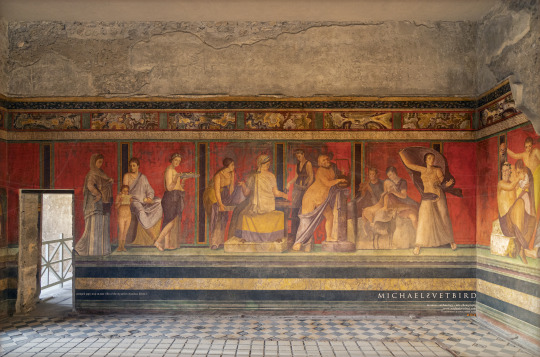

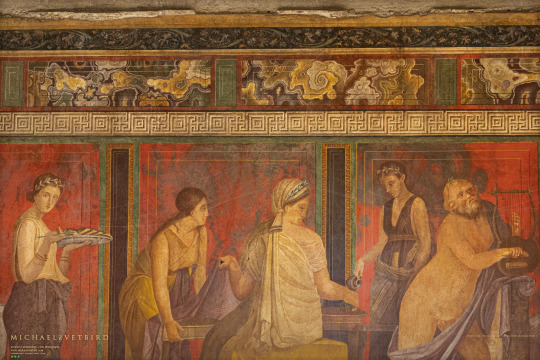

• VILLA DEI MISTERI | Villa of the Mysteries: "The painted frieze, which can be dated to between 70 and 60 BC. is characterized by the representation of large scale mythological figures." [txt ©PAP] Room 5, Main Wall Painting [side-walls are on the way] Villa of the Mysteries, Pompei Scavi, Pompeii, Regio VI http://pompeiisites.org/en/archaeological-site/villa-of-the-mysteries 70-60 BC.
Parco Archeologico di Pompei | PAP http://pompeiisites.org/en FB: https://www.facebook.com/pompeiiparcoarcheologico IG: @ pompeii_parco_archeologico TW: @ pompeii_sites
• Pic 2: - A Maenad, who animated the processions of Dionysus, recoils in fear. - Paniskoi, mythological figures who lived in the woods, suckle a kid and play music.
• Pic 3: - The preparation of a ritual meal for the deity [3 female figs]. - Silenus playing the lyre.
• Pic 4: - The reading the liturgy of the ritual [3 figs w/ a boy]. - A pregnant young woman offers sacred cakes.
• Pics 1 and 5: - General views of the scene [Main wall, Room 5].
PAP | Michael Svetbird phs©msp | 10-11|2022 6200X4100 600 [I.- III. & V.] [no commercial use | sorry for the watermarks]
#pompeii#pompei#pompéi#pompeiscavi#scavi#archaeologicalpark#parcoarcheologico#archaeologicalsite#villaofthemysteries#villadeimisteri#villa#romanvilla#ancientpompeii#pompeiiruins#ancient#ancientpainting#fresco#dionysus#archaeology#ancienthistory#excavations#antiquity#heritage#museology#museum#mythology#photography#museumphotography#archaeologyphotography#michaelsvetbird
28 notes
·
View notes
Text
Welcome to Tulum Beach Restaurant - the ultimate destination for vegan foodies and eco-enthusiasts alike. Our restaurant is a haven for those seeking a tantalizing, plant-based dining experience made from locally sourced ingredients, all while enjoying the breathtaking ocean views. But there's more to Tulum than just amazing food - immerse yourself in the stunning natural beauty and vibrant culture Tulum has to offer, from mystical cenotes and lush biosphere reserves to thrilling adventure sports and ancient archaeological sites. Join us in our vegetarian dream getaway where we celebrate delicious, eco-friendly dining and embrace the wonders of nature!
#TulumBeachRestaurant#VeganFood#EcoFriendlyDining#LocallySourcedIngredients#OceanViews#NaturalBeauty#AdventureSports#ArchaeologicalSites#PlantBasedCuisine#SustainableLiving
0 notes
Text

Bottom and part of the rim of a plate, embedded in a portion of mortar, with a Nereid riding a marine animal with the head of a deer, beneath which there is a fish; reciprocal border. Ref. https://catalogo.museivaticani.va/index.php/Detail/objects/MV.60623.0.0
#archaeology #history #ancient #archeologia #ancienthistory #archaeologist #art #archaeologylife #archeology #museum #architecture #archaeological #travel #heritage #archaeologylovers #arqueologia #egypt #culture #archaeologicalsite #ancientegypt #ancientworld #italy #photography #ancientruins #travelphotography #prehistory #archeologie #rome #arkeoloji #ancientarchitecture
#archaeology#photography#culture#greek coins#travel#palestrina#roman coins#sidon saida tyre beirut phoenician الصديق_الصدوق#الصديق_الصدوق#history
24 notes
·
View notes
Video
youtube
Machu Picchu Beyond the Stones, Into the Mysteries
https://TravelingFevah.com - Machu Picchu, nestled high in the Andes Mountains of Peru, is not just an archaeological site but a testament to the ingenuity and resilience of the ancient Incan civilization. Dating back to the 15th century, this remarkable citadel is shrouded in mystery and intrigue, captivating the hearts and minds of travelers from around the globe.
Historical Significance: Machu Picchu was constructed during the height of the Inca Empire, under the reign of Emperor Pachacuti. Its purpose remains a subject of debate among historians, with theories ranging from a royal estate to a religious sanctuary or a strategic military outpost. Regardless of its original function, Machu Picchu served as a symbol of Incan power and achievement.
Architectural Marvel: What sets Machu Picchu apart is its sophisticated stone architecture, characterized by meticulously cut and fitted stones without the use of mortar. The precision of the construction, particularly evident in structures like the Temple of the Sun and the Intihuatana stone, demonstrates the Incas' mastery of engineering and craftsmanship. Breathtaking Panoramic Views: Perched atop a ridge overlooking the Sacred Valley, Machu Picchu offers breathtaking panoramic views of the surrounding mountains and lush greenery.
The site's strategic location amidst the Andean peaks adds to its mystique, with clouds often swirling around the peaks, enhancing the ethereal ambiance. Cultural and Spiritual Significance: Machu Picchu holds immense cultural and spiritual significance for the indigenous Quechua people of Peru. It is believed to be a sacred site with astronomical alignments and ritualistic purposes, serving as a link between the earthly realm and the celestial heavens. The Intihuatana stone, often referred to as the "Hitching Post of the Sun," is thought to have been used for astronomical observations and ceremonies. Modern-Day Wonder:
Today, Machu Picchu is recognized as a UNESCO World Heritage Site and one of the New Seven Wonders of the World. It attracts visitors from all corners of the globe, drawn not only by its historical and architectural marvels but also by the sense of awe and wonder that pervades its ancient ruins. In summary, Machu Picchu is more than just a collection of ancient ruins; it is a window into the rich cultural heritage and spiritual beliefs of the Inca civilization. Its breathtaking beauty, coupled with its enigmatic history, continues to inspire and enchant travelers seeking to unravel its mysteries and experience its timeless allure.
Thanks for watching, don't forget to subscribe and hit the bell to stay updated when we're putting out new content for you. You can download your FREE Guide: "The Budget Traveler's Handbook" and get cheap flights, cheap hotels, cheap destinations, cheap car rentals, cheap traveler insurance at: https://TravelingFevah.com
#MachuPicchu, #IncaCivilization, #AncientRuins, #PeruTravel, #UNESCOWorldHeritage, #TravelDestination, #BucketListTravel, #HistoricalSite, #AndesMountains, #SouthAmericaTravel, #ArchaeologicalSite, #LostCity, #PeruvianHistory, #MountainTreks, #CulturalHeritage, #TravelAdventure, #Wanderlust, #ExploreMachuPicchu, #IncaTrail, #HikingExpedition, #MountainViews, #HistoricalWonders
2 notes
·
View notes